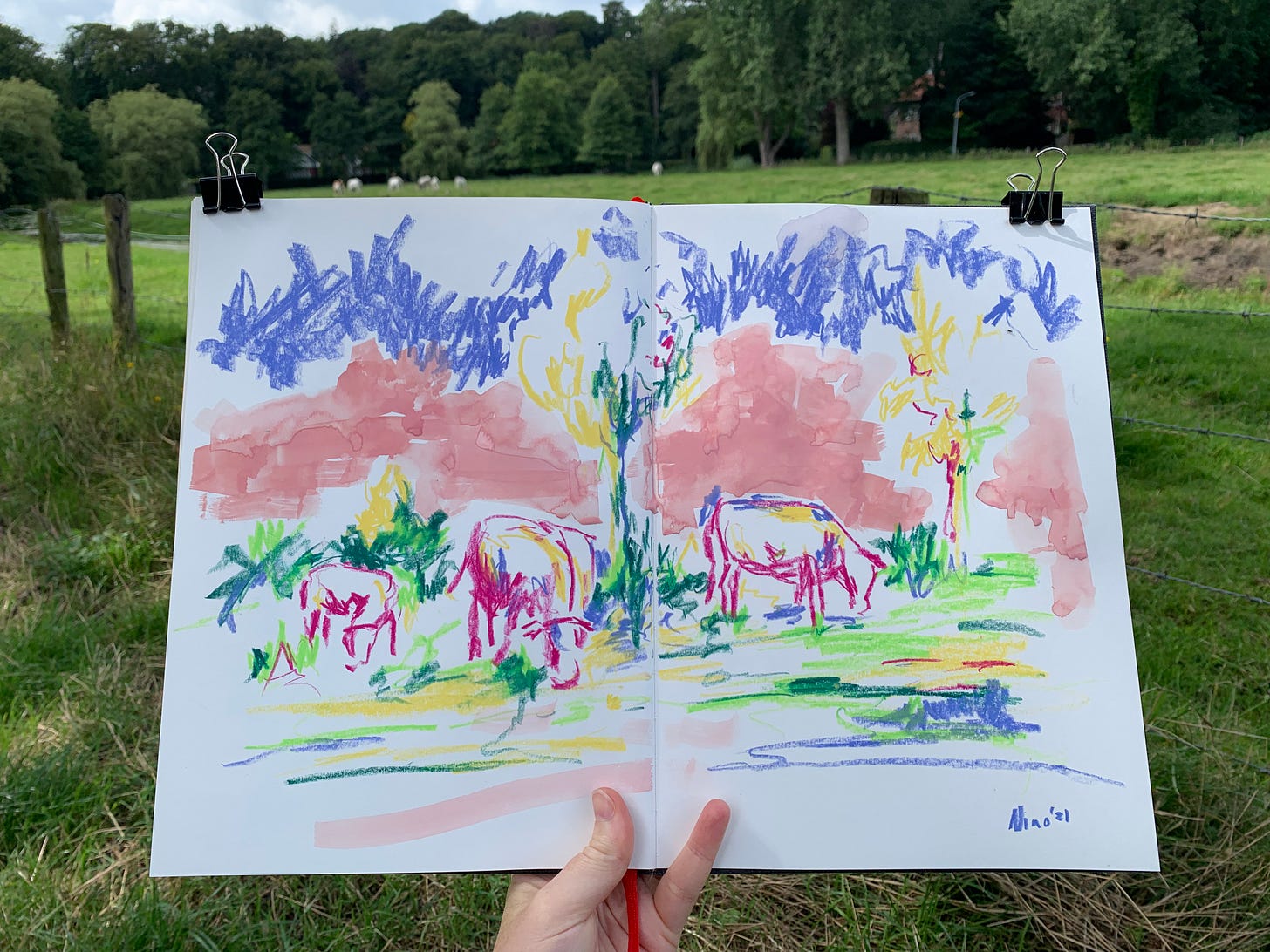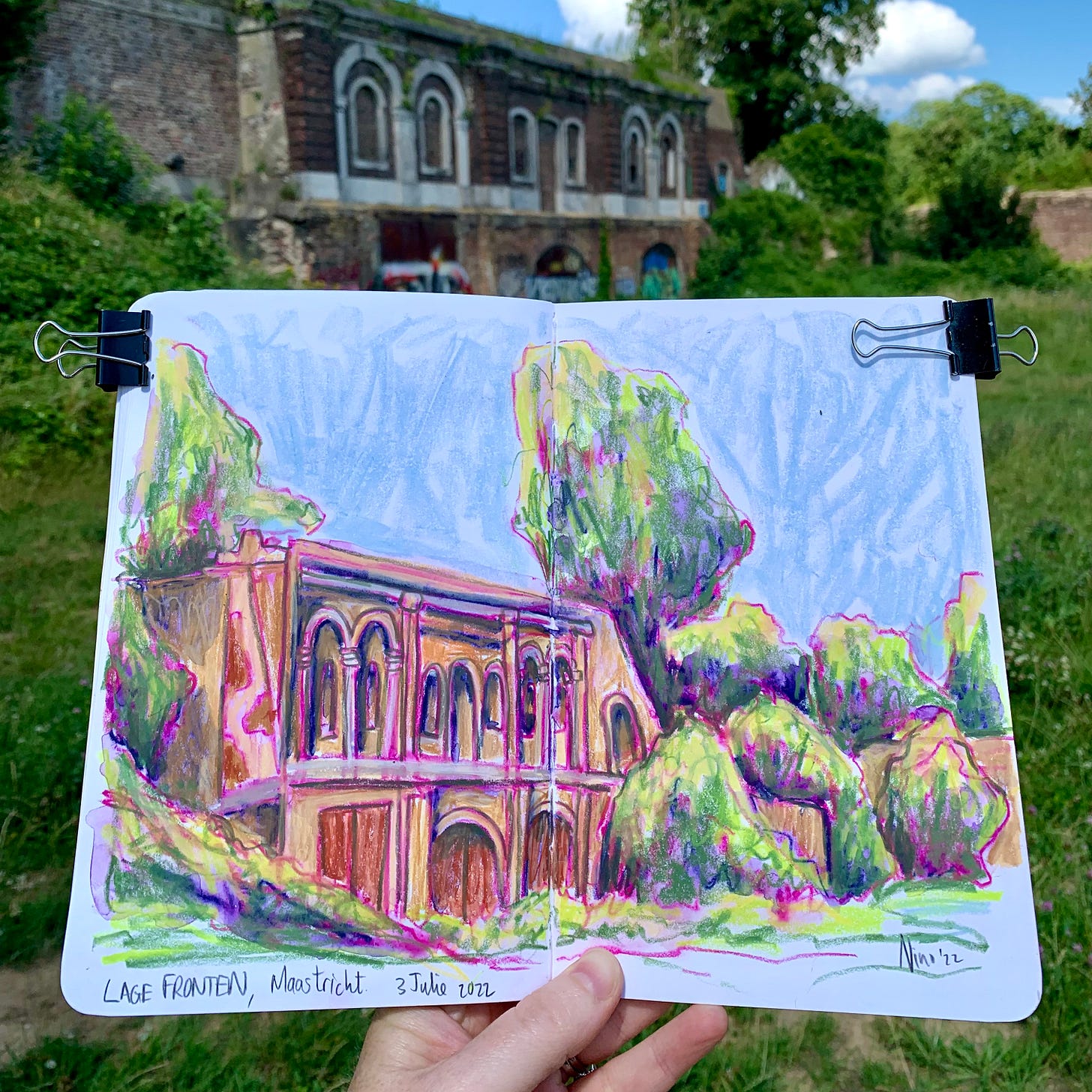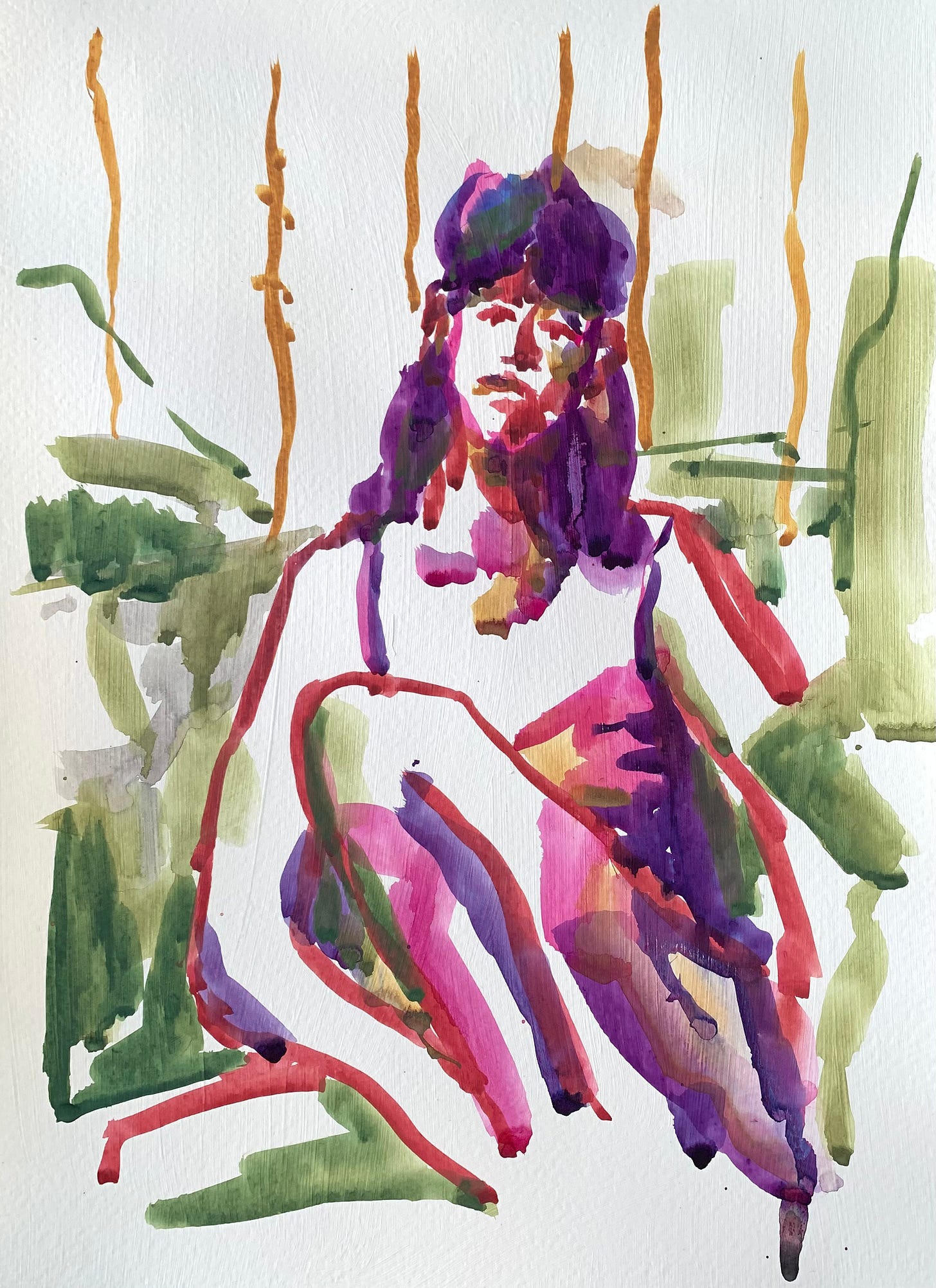I had mixed feelings when I heard that magenta would be this year’s colour of the year. On the one hand, it is one of my favourite colours to work with, but on the other, I don’t want it to be over commercialised and made into just another fad. However, I do want to share with you why I love magenta so much. And why, if you could only have three colours in your art box, magenta should be one of them.
Sketch. Explore. Create! gives a peek into my creative practice, hoping to inspire and encourage you on your own creative journey.
My relationship with the colour started in my grandmother’s garden, long before I even knew the word ‘magenta’. On her porch my grandmother had hanging flower baskets, that she filled with fuchsias. I remember loving and staring at these little flowers that looked something between a bell and a ballerina’s dress.
The first specimen of the fuscia plant, known to Europeans, was found by P.C. Plumier on the Caribean Island, Hispaniola. He named it the Fuchsia in honour of the physician and botanist, Leonard Fuchs. In 1856 the colour was chemically developed as a dye. At first it was called fuchsine or fuchsia - like the flower. But a few years later it was renamed ‘magenta’, after a battle that took place between France and Austria near the Italian town called Magenta.
In the 20th century the family of quinacridone dyes was developed and quinacridone magenta, which we now use, was birthed. The pigments used for quinacridone magenta paint is mostly PR122 but also PR202, and is both lightfast and transparent.
In the video you can see all my magenta art supplies as well as why I love the colour so much.
Do you have a current favourite colour? Do you know why it is your current favourite? I love Kassia St. Claire’s book, The Secret Lives of Colour, it makes me want to use all of them. Except for the dangerous ones, of course.
I will end off with something really interesting about magenta. When you shine a light through a prism, you get the visible colour spectrum. Yet, magenta doesn’t fall on that spectrum. There is no light wave length for magenta. So, in a sense, it does not exist, on some level. Yes, I still struggle to wrap my mind around this. I am not going to go into detail about this, but for those who find this interesting I will leave two youtube videos from people who can explain it much better than me.









Share this post